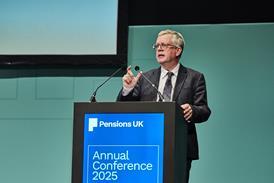The number of scheme data requests made by the Pensions Regulator is falling – but the requests are getting more detailed and complex, according to new data.
That’s according to research from law firm Eversheds Sutherland, which found that the number of section 72 data requests made by TPR fell from a peak of 49 in the fourth quarter of 2018 to just 11 in the fourth quarter of 2023.
Section 72 requests are used to demand information from pension schemes if TPR suspects wrongdoing.
Despite this headline drop, Claire Carroll, partner at Eversheds Sutherland, said the increasing size of schemes now means that section 72 requests are more difficult, invasive and expensive than ever before. This is because TPR also asks for information from the scheme’s supply chain.
‘Kitchen sink’ approach
Carroll said: “In recent years, consolidation has seen schemes get bigger as smaller schemes are swallowed by master trusts. Section 72 requests have always been a lot of work, but for a large scheme carrying a lot of data facing a ‘kitchen sink’ request from TPR, the ask is significant.
“And the regulator also wants to investigate those in the supply chain. A domino effect is being created.”
Requests can now encompass information from trustees, actuaries, lawyers, investment managers, accountants and sponsors, according to Carroll.
“A data chasing exercise begins so while the number of requests in this data might be lower, the workload could be significantly higher, with those receiving the request potentially having to gather data relating to schemes recently moved under their umbrella,” Carroll continued.
She added that pension schemes and trustees should not look at these numbers and think that the regulator was making fewer requests than before.
Instead, she highlighted that TPR can make “multiple requests over a long period of time” before any enforcement case details materialise.
“Schemes and trustees should look at these numbers in the context of consolidation and see that the regulator is committing to potentially major investigations over a lengthy period of time,” Carroll said. “With consistent levels of requests being made schemes will want to address their data infrastructure in case the regulator comes knocking and they have to pull together disparate data.”
Eversheds obtained the information through a Freedom of Information Act request.
The information also revealed that, over the past five years, TPR made 1,240 requests in relation to an auto-enrolment breach, 371 requests issued in relation to late payments, and one request in relation to a criminal breach.
Behind the numbers
A spokesperson for TPR told Pensions Expert: “We only seek information where reasonably required for an investigation and is proportionate to its scope.
“The largest pension schemes are responsible for the pots of millions of savers. As we continue to move to a landscape of fewer, larger schemes it is right we use our powers to ensure we have the information necessary to protect those savers’ interests.”
TPR said the use its automatic enrolment information gathering powers has remained consistent over the past three years in number and in terms of the nature and breadth of what it asks schemes to provide.
The increase in section 72 requests for the last quarter of 2019 was due to a specific piece of work carried out in response to market intelligence. That piece of work saw the regulator issue 300 section 72 requests, according to the spokesperson.
Requests were also higher in number than usual in 2020 due to the national lockdown in place due to the Covid-19 pandemic.
Further reading
TPR reports rise in interventions (13 July 2023)
TPR criminal powers policy spurs more industry concern (29 September 2021)






















